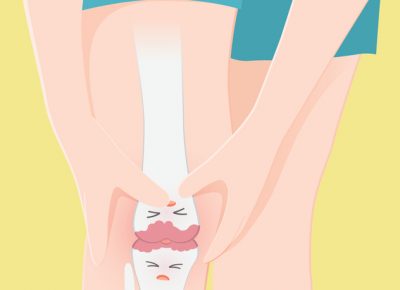Monthly Archives: May 2019
Why Does My Knee Hurt?

“It hurts when I squat.” “It hurts when I sit for a long time, like long car rides.” “It hurts when I walk downstairs.” If these statements sound familiar, you’re not alone.
They are the most common symptoms for a widespread knee problem, patellafemoral pain syndrome (PFPS). PFPS is a generic term that encompasses many different causes of pain in the front part of the knee, particularly under the kneecap (patella). It can be found in all ages and across the spectrum of activity levels, but is most commonly associated with teenage and young adult female athletes.
PFPS is most frequently caused by abnormal tracking of the kneecap. The patella sits in a groove at the far end of the thigh bone (femur). As you flex and straighten your knee, the patella glides up and down through this groove. A number of structures assist in making sure the patella stays in proper alignment. These include the smooth cartilage that lines the end of the femur and undersurface of the patella, called the articular cartilage. The muscles and tendons of the thigh and hip also play an important role. And finally, the alignment of the bones above and blow the knee are important.
Some of the underlying causes of PFPS occur because of natural growth and development. For example, as girls go through puberty, one of the natural changes is widening of the hips. Sometimes this widening causes change in the way the muscles and other tissue pull on the knee and patella, leading to abnormal tracking. This is one of the reasons PFPS is so common in adolescents and young adults. Another common structural abnormality is flat feet. When you walk with flat feet, your foot turns in more, and that can lead to changes in patella tracking, and ultimately knee pain.
In other cases, PFPS is completely our own doing. The most common example of that is simple overuse. Athletes that drastically increase their activity, especially running and jumping, are at risk for developing PFPS. In addition, if an athlete’s training program is not well balanced, the muscles in the thigh and hip can develop imbalances. These imbalances can lead to abnormal forces pulling at the patella leading to improper tracking. This is extremely common as many basic workouts focus primarily on the largest muscle groups of the legs and ignore the smaller stabilizing muscles that help maintain proper movement, including patella tracking.
There are a number of factors that can contribute to pain in the front of the knee. All of them must be evaluated to obtain an accurate diagnosis. And once identified, all abnormalities must be properly addressed, whether with physical therapy, braces orthotics, etc. to fully resolve the pain long-term.
